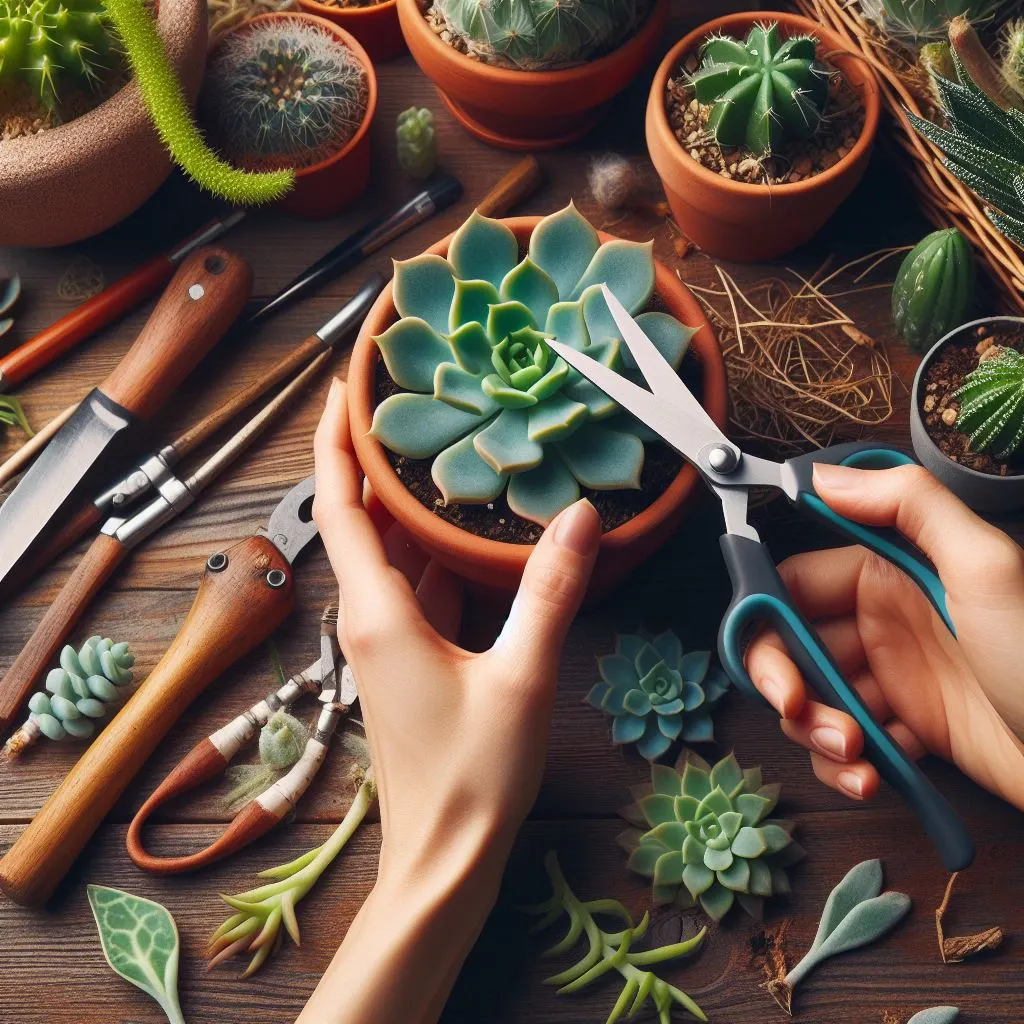Pruning and Trimming Tropical Succulents for Healthier Growth
Introduction
Tropical succulents are wonderful plants that add a touch of exotic beauty to any garden or indoor space. These plants, such as aloe vera, jade plants, and certain types of cacti, are adapted to thrive in warm, humid climates. One of the keys to keeping tropical succulents healthy and vibrant is knowing how to properly prune and trim them. In this article, we’ll explore why pruning and trimming are essential, the tools you’ll need, techniques for identifying areas to trim, and tips for successful pruning and trimming.

What are Tropical Succulents?
Before diving into pruning and trimming techniques, it’s helpful to understand what tropical succulents are. Succulents are plants that have adapted to store water in their leaves, stems, or roots, allowing them to survive in dry or arid conditions. Tropical succulents, as the name suggests, thrive in warm, tropical climates where they can bask in ample sunlight and humidity. Their fleshy leaves and unique shapes make them popular choices for both indoor and outdoor gardens.
Why Pruning and Trimming are Important
Pruning and trimming are important tasks for maintaining the health and appearance of tropical succulents. Here are a few key reasons why these practices are essential:
- Encourage New Growth: Removing dead or overgrown parts of the plant encourages new growth, which helps keep the succulent looking fresh and vibrant.
- Improve Air Circulation: Trimming away crowded or tangled growth improves air circulation around the plant, reducing the risk of fungal infections and pests.
- Prevent Disease Spread: Cutting away diseased or damaged parts prevents diseases from spreading to healthy sections of the plant.
Tools You’ll Need
Before you start pruning and trimming your tropical succulents, gather the necessary tools:
- Scissors or Pruning Shears: Use sharp, clean scissors or pruning shears to make precise cuts without crushing the plant tissues.
- Gloves: While optional, wearing gloves can protect your hands from thorns or sharp edges on certain succulent varieties.
- Clean Cloth or Paper Towels: Keep a clean cloth or paper towels handy to wipe down your tools between cuts and to clean any sap or debris from the plants.
Preparing Your Work Area
Creating a tidy and organized workspace is important for efficient and successful pruning and trimming sessions. Clear a flat surface where you can work comfortably with your succulents. Have a trash bag or container nearby to collect trimmings and debris as you work.
Identifying Areas to Trim
Before you start pruning, take a close look at your tropical succulents to identify areas that need attention. Here are some signs that indicate pruning or trimming is necessary:
- Dead or Yellowing Leaves: Remove leaves that are completely dried out, yellowing, or damaged. These leaves not only detract from the plant’s appearance but can also attract pests and disease.
- Overgrown Branches: Trim back branches that have grown too long or are starting to crowd neighboring plants. This opens up space and encourages healthy growth.
Pruning Techniques
When it comes to pruning tropical succulents, it’s important to use proper techniques to avoid damaging the plants. Follow these steps for successful pruning:
- Use Sharp Tools: Use sharp scissors or pruning shears to make clean cuts. Dull tools can crush plant tissues, leading to slower healing and potential infections.
- Cut at an Angle: When removing leaves or branches, cut at a 45-degree angle just above a node or joint. This angled cut helps water drain away from the cut site and encourages new growth.
- Remove Dead Material: Cut away dead or diseased leaves and branches completely. Leaving behind partial dead material can still attract pests and disease.
Trimming Tips
In addition to pruning, trimming helps shape and maintain the overall appearance of your tropical succulents. Follow these tips for successful trimming:
- Start with Overgrown Areas: Begin by trimming back any overgrown branches or stems near the base of the plant. This opens up the plant and allows light and air to reach inner growth.
- Shape for Aesthetics: Trim carefully to maintain the natural shape of the succulent or to achieve a specific look. Avoid excessive trimming, especially for slow-growing succulents, as it can stress the plant.
- Regular Maintenance: Plan regular trimming sessions to keep your succulents looking tidy and healthy. Monitor growth patterns and adjust your trimming routine as needed.
Aftercare
After completing your pruning and trimming tasks, it’s important to provide proper aftercare for your tropical succulents:
- Clean Up Debris: Dispose of trimmings and debris in a compost bin or trash bag. Removing plant waste reduces the risk of pests and diseases.
- Monitor Watering: Adjust your watering schedule as needed after pruning. Some succulents may require slightly less water immediately after trimming.
- Inspect Regularly: Keep an eye on your succulents in the days and weeks following pruning. Look for signs of new growth, pests, or disease, and take appropriate action if needed.
Common Mistakes to Avoid
While pruning and trimming are beneficial practices, avoid these common mistakes to ensure the health of your tropical succulents:
- Over-Pruning: Avoid cutting back too much foliage at once, especially for slow-growing succulents. Over-pruning can stress the plants and inhibit new growth.
- Using Dirty Tools: Always clean and sterilize your pruning tools before and after use. Dirty tools can introduce infections to your plants.
- Ignoring Signs of Stress: If your succulents show signs of stress after pruning, such as wilting or yellowing, adjust their care routine accordingly. It may take time for plants to recover from pruning shock.
Conclusion
Pruning and trimming tropical succulents are essential tasks for maintaining their health and appearance. By following proper techniques, using the right tools, and providing appropriate aftercare, you can enjoy lush, vibrant succulents in your garden or home. Remember to monitor your plants regularly, adjust your pruning routine as needed, and enjoy the beauty and benefits of well-maintained tropical succulents in your space. Happy gardening!